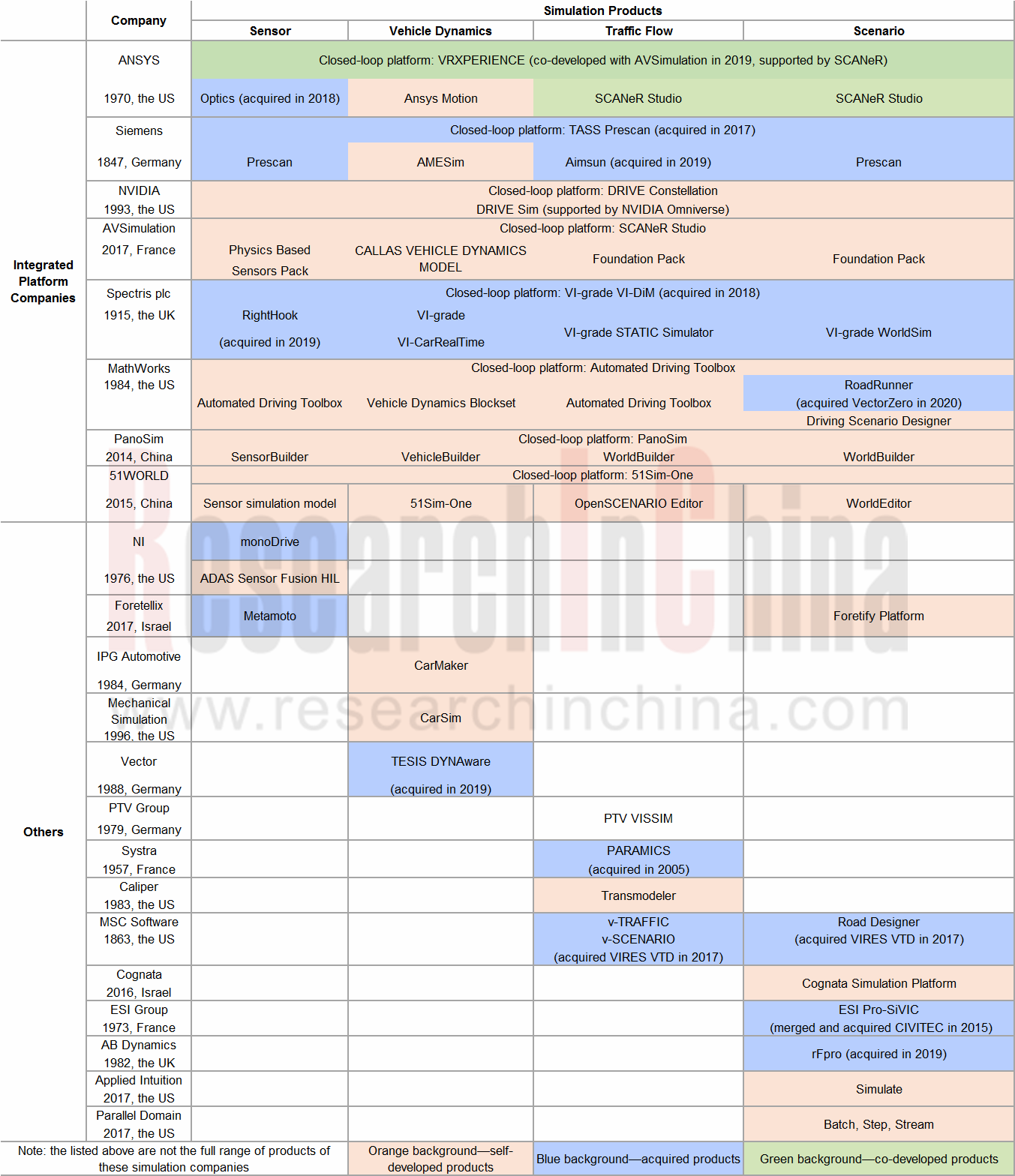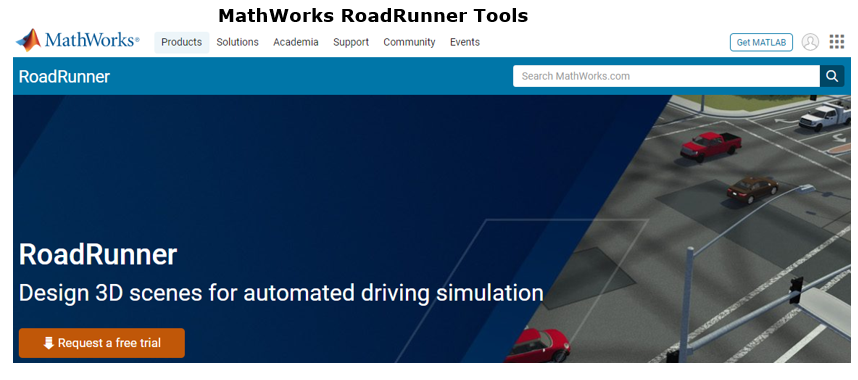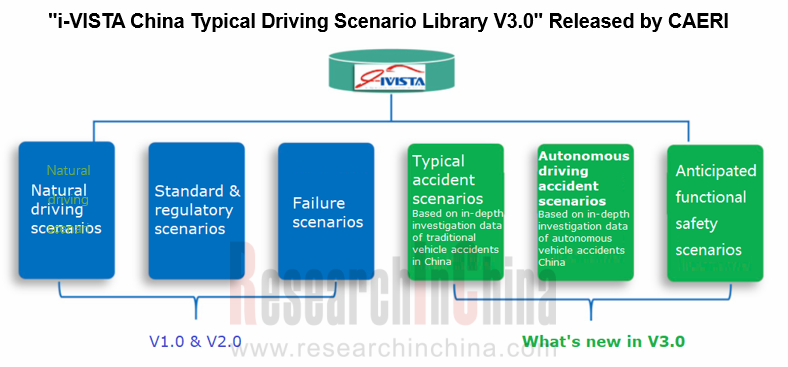Autonomous Driving Simulation Research: Foreign giants build closed-loop simulation platforms, while domestic companies focus on the construction of scenario library
In the development of high-level autonomous driving, the importance of simulation testing becomes more and more apparent. From 2020 to 2021, both foreign and domestic companies stepped up the layout in the field of autonomous driving simulation.
Foreign simulation giants are committed to building closed-loop simulation platforms for setting up industrial barriers
In the transition from industrial simulation to autonomous driving simulation, giants such as Ansys and Siemens have established various modules of autonomous driving simulation through continuous acquisition, cooperation and technological development, strengthened the closed loop of the simulation platform, and built industrial barriers. At present, the layout of foreign leading companies has covered more than 80% of the simulation sector, and which is continuously updated.

From 2020 to 2021, top foreign simulation companies updated and optimized the following sectors:
01 More sensor models such as camera, radar, LiDAR, etc. are supported
Ansys: unified simulation with the addition of camera, LiDAR and radar
On January 7, 2020, FLIR Systems, Inc. and ANSYS were partnering to deliver superior hazard detection capabilities for assisted driving and autonomous vehicles (AVs) — empowering automakers to deliver unprecedented vehicle safety. Through this partnership, FLIR will integrate a fully physics-based thermal sensor into ANSYS’ leading-edge driving simulator to model, test, and validate thermal camera designs within an ultra-realistic virtual world. The new solution will reduce OEM development time by optimizing thermal camera placement for use with tools such as automatic emergency braking (AEB), pedestrian detection, and within future AVs.
In January 2021, ANSYS 2021 R1 expanded sensor simulation capabilities with scanning and rotating lidar models to improve AV simulation reliability. At the same time, it used a new GPU to accelerate the radar simulation.
Siemens: addition of LiDAR simulation
In September 2020, Siemens partnered with XenomatiX to add a generic, physics-based LiDAR simulation model to its Simcenter Prescan software. The knowledge and expertise of XenomatiX’ optical team together with its advanced, true solid-state, LiDAR technology, can enable Siemens to fine-tune its simulation model and validate it with real-life measurements from XenomatiX.
At present, the LiDAR model of Prescan can accurately describe all the optical properties (including surface shape, reflection characteristics, texture, and structure) of materials.
CARLA: upgrade of LiDAR sensor
In September 2020, CARLA 0.9.10 came with the trunk packed of improvements, with notable dedication to sensors. The LIDAR sensor was upgraded, and a brand-new semantic LiDAR sensor provides with much more information of the surroundings.
02 Expansion of Cloud Simulation
Cloud computing capabilities can support large-scale simulation, cover massive driving scenarios, achieve high-concurrency running tests, and accelerate simulation running speed. Therefore, massively parallel acceleration in the cloud is one of the necessary core capabilities of autonomous driving simulation test platforms. Currently, the autonomous driving industry generally chooses Microsoft Azure as the cloud simulation partner.
For instance:
In October 2020, Ansys collaborated with Microsoft to offer cloud-enabled autonomous vehicle (AV) simulation capabilities to joint customers. Ansys VRXPERIENCE, an AV virtual test platform, can unlock massive scalability when run on Azure, empowering users to test drive millions of virtual miles across countless scenarios in an expedient manner — greatly optimizing safety and development costs.
In December 2020, AirSim added development environment deployment documents on Azure to support cloud simulation.
Siemens PreScan is compatible with Microsoft Azure, Amazon AWS, as well as some Chinese cloud service providers and cloud platforms.
03 Joint simulation has become a key development direction
Different simulation platforms have different emphasis on simulation modules. For example, Carsim, CarMaker, VI-Grade, VeDYNA, etc. focus on simulation of vehicle dynamics, while Vissim, SUMO, etc. keep an eye on simulation of traffic flow. From 2020 to 2021, more and more solution providers opened software interfaces and conduct joint simulations with other solutions.
The new version of Prescan released in January 2020 supports the generation of large-scale traffic flows. This feature is supported by the Aimsun plug-in and the PTV Vissim plug-in. The Aimsun plug-in enables the synchronization of Aimsun's micro traffic original scenarios; the Vissim plug-in can perform collaborative simulation and data transmission between TASS PreScan and PTV Vissim.
CARLA 0.9.9 released in April 2020 can realize the collaborative simulation with SUMO. In this mode, the actions or events that occur in one simulator will be automatically propagated to another simulator.
CARLA 0.9.11 released in December 2020 enables co-simulation between CarSim and CARLA, allowing users to create CarSim vehicles, taking control over dozens of parameters, including suspension system and tires.
In January 2021, Mechanical Simulation Corporation announced the release of 2021.0 versions of the vehicle simulation tools CarSim?, TruckSim?, BikeSim?, and SuspensionSim?. This release focuses on scenes and scenarios to improve ease of setup and testing. The user interface and math models have improved third-party software support. In the future, the company will continue to develop tight interfaces to third-party software from technology partners like Epic Games, NVIDIA, atlatec, Foretellix, monoDrive, Siemens, and CARLA.
Domestic companies have embarked on autonomous driving simulation from the perspective of scenarios
The wider the coverage of scenarios that autonomous driving systems can handle, the wider the area that autonomous vehicles can drive. With the upgrade of autonomous driving functions, the number of scenarios that need be tested and verified has increased exponentially during the upgrade and iteration from L1 to L4/L5, and the construction of scenario libraries has become a vital part of the simulation industry chain.
At present, Chinese companies such as Tencent, CATARC, CAERI, Baidu, 51World have established their own autonomous driving simulation scenario libraries.
Tencent: More than 99% of autonomous vehicle simulation scenarios can be covered
Based on powerful game engine capabilities, Tencent's autonomous driving simulation platform TAD Sim performs excellently in the reality and accuracy of scenarios. Its scenario generation system can derive 20 million virtual scenarios based on 2,000 types of logic scenarios, covering more than 99% of automated vehicle simulation scenarios.
In June 2020, Tencent released TAD Sim 2.0, the new generation of its autonomous driving simulation platform, to improve the development and testing efficiency of autonomous driving. Compared with the previous generation, TAD Sim 2.0 fills the gap between road test data and virtual scenarios. With higher resolution in 3D scenario reconstruction and sensor simulation, the platform can make the simulation closer to reality. A huge variety of environments, weather conditions and even extreme traffic conditions can be generated by combining road test data and virtual scenarios to fulfill the needs of autonomous driving testing in TAD Sim 2.0.
However, Tencent will not stop at autonomous driving. Its further layout is to further explore its own capabilities, build virtual twin cities, and facilitate smart cities and smart transportation. Specifically, it will integrate its game technology, cloud technology, and simulation technology to create a virtual twin platform so as to realize the mapping between the real world and the virtual world, and self-learn and update in the virtual world. In the future, it will achieve iteration, prediction, decision-making and other capabilities.
CATARC: AD Scenario Generator debuts, and the built-in scenario library covers 4,000 Scenarios
CATARC’s self-developed simulation platform AD Chauffeur has a built-in scenario library covering natural driving scenarios, standard and regulatory scenarios, CIDAS dangerous accident scenarios and experience restructuring scenarios, etc.
The AD Chauffeur 2.0 released by CATARC in September 2020 adds the AD Scenario Generator, which enables scenario construction, the conversion of multi-source data formats OpenSCENARIO, logical scenario splicing and reorganization to support scenario generation. At the same time, it expands the built-in scenario library to cover 4,000 scenarios, which is convenient for clients.

CAERI: typical accident scenarios, autonomous driving accident scenarios, and expected functional safety scenarios are added
In December 2020, CAERI released the "i-VISTA China Typical Driving Scenario Library V3.0". Based on the natural driving scenarios, standard and regulatory scenarios, experience scenarios and a small number of accident scenarios in the previous version, CAERI added typical accident scenarios, autonomous driving accident scenarios, and expected functional safety scenarios. It supports autonomous driving simulation test and evaluation, and application to simulation systems such as MIL, SIL, and HIL.

In addition to the above-mentioned companies, Baidu exploits Apollo technology to establish a simulation scenario library. 51World’s "Urban All-Element Scenario Automation Platform (AES2021)" has improved the coverage and accuracy of scenarios.
Generally speaking, Chinese companies are still fighting their own way in the construction of scenario libraries, facing problems such as inconsistent data on scenarios, difficulty in establishing an evaluation and certification system of autonomous driving simulation & test. Therefore, the establishment of scenario library standards has become one of the current concerns in the field of simulation.
Chinese ADAS and Autonomous Driving Tier 1 Suppliers Report, 2021-2022
Autonomous Driving Tier 1 Suppliers Research: the installation rate of L2 and above autonomous driving functions in passenger cars hit over 30% in 2022Q1.
In 2022Q1, the installation rate of L2 and a...
Global and China Electronic Rearview Mirror Industry Report, 2021-2022
Electronic rearview mirror research: the streaming rearview mirror installations soared by 73% in 2021.
This report combs through and summarizes the global and Chinese electronic rearview mirror mark...
Global and Chinese Automakers’ Modular Platforms and Technology Planning Research Report, 2022
Research on Automakers’ Platforms and Their Planning: the Strategic Layout Directions of 32 Automakers
At present, global automotive industry is in the midst of profound changes unseen in a century....
Automotive Intelligent Cockpit Platform Research Report, 2022
Research on Intelligent Cockpit Platforms: Intelligent cockpits rush into a new era of "cross-domain integration and layered software design"
Cockpit hardware platform field: Faster cross-domain inte...
Global and China Flying Car Industry Research Report, 2022
ResearchInChina has released “Global and China Flying Car Industry Research Report, 2022".
A flying car is a three-dimensional vehicle. Broadly speaking, it is a low-altitude intelligent autonomous t...
Global and China Passenger Car T-Box Market Report, 2022
Passenger car T-BOX research: T-Box OEM installation rate will reach 83.5% in China in 2025
ResearchInChina has published Global and China Passenger Car T-Box Market Report 2022 to summarize and ana...
Global and China Purpose Built Vehicle (PBV) and Robocar Report, 2022
PBV and Robocar research: new idea of building brick cars, a new car type for future mobility Building brick cars moves the cheese of traditional OEMs.
Purpose built vehicle (PBV) refers to special ...
China Automotive Voice Industry Report, 2021-2022
Automotive voice market: The boom of self-research by OEMs will promote reform in the supply mode
Before the advent of fully automated driving, the user focus on driving, and voice interaction is sti...
Global and China Automotive Emergency Call (eCall) System Market Report, 2022
Automotive eCall system: wait for the release of policies empowering intelligent connected vehicle safetyAt the Two Sessions held in March 2022, more than 10 deputies to the National People's Congress...
Global and China Leading Tier1 Suppliers’ Intelligent Cockpit Business Research Report, 2022 (II)
Tier1 Intelligent Cockpit Research: The mass production of innovative cockpits gathers pace, and penetration of new technologies is on a rapid riseGlobal OEMs and Tier 1 suppliers are racing for the i...
Global and China Leading Tier1 Suppliers’ Intelligent Cockpit Business Research Report, 2022 (I)
Tier1 Intelligent Cockpit Research: The mass production of innovative cockpits gathers pace, and penetration of new technologies is on a rapid riseGlobal OEMs and Tier 1 suppliers are racing for the i...
China Commercial Vehicle Intelligent Cockpit Industry Report 2021
Research on Intelligent Cockpits of Commercial Vehicles: Heading for Large Screens, Voice Interaction, Entertainment and Life
Following AD/ADAS functions, the intelligent configuration of the cockpit...
Automotive Ultra Wide Band (UWB) Industry Report, 2022
UWB got initially utilized in the military field, and began to be commercially applied after the release of criteria for UWB commercialization in 2002. In 2019, Car Connectivity Consortium (CCC) liste...
China Automotive Distribution and Aftermarket Industry Report, 2022-2027
Since the introduction of 4S store model into China at the end of 20th century, China's authorized dealer system has gradually developed from a single-store-based mode to a group-based mode, and from ...
Global and China Skateboard Chassis Industry Report, 2021-2022
Research into skateboard chassis: where to sell, how to sell and to whom it is sold
Rivian, a new carmaker based on skateboard chassis, is quite popular in the market and becomes the focus of the aut...
Emerging Automakers Strategy Research Report, 2022--NIO
Research on emerging carmaking strategies: no new cars in 2021, 3 new cars in 2022, can NIO make its renaissance?
The delivery of ET7 is imminent, and the sluggish sales situation is expected to fade...
Automotive and 5G Industry Integration Development Report, 2022
Research on integration of vehicle and 5G: OEMs rush into mass production of 5G models whose sales may reach 3.68 million units in 2025
By the end of 2021, China had built and opened in excess of 1.3...
China Automotive Finance Industry Report, 2022-2030
Auto finance is lucrative with the highest profit margin in the international automobile industry chain, contributing to roughly 23% of the global automobile industry profits. Yet, auto finance only h...